The Complete Guide to Lunging Your Horse: Techniques, Benefits, and Safety
Lunging your horse is far more than simply having your horse move in circles around you. This fundamental training technique, which dates back centuries in classical horsemanship, serves as a cornerstone of equine education and development. Whether you’re working with a young horse just beginning its training journey, maintaining an experienced competition partner, or helping rehabilitate a horse after injury, proper lunging techniques can transform your horse’s physical capabilities and mental engagement.
At its core, lunging involves having your horse move around you in a controlled circle while responding to your voice and body language commands. This seemingly simple exercise creates a powerful foundation for all future training, offering a unique opportunity to develop your horse’s balance, strength, and responsiveness without the added complexity of a rider. For handlers, it provides an invaluable chance to observe your horse’s movement, assess their physical condition, and strengthen the crucial bond between human and horse.
However, effective lunging requires more than just basic knowledge – it demands a thorough understanding of equine behavior, movement patterns, and training principles. Many riders and handlers unknowingly make common mistakes that can not only limit the benefits of lunging but potentially create training problems or even lead to injury. That’s why mastering the correct techniques, understanding the proper use of equipment, and learning to read your horse’s responses are essential skills for every equestrian.
In this comprehensive guide, we’ll walk you through everything you need to know about lunging, from basic safety principles to advanced training techniques. Whether you’re a beginner looking to start lunging for the first time or an experienced handler aiming to refine your skills, you’ll find valuable insights and practical advice to enhance your training sessions. We’ll explore not just the ‘how’ of lunging, but also the crucial ‘why’ behind each technique, helping you develop a deeper understanding of this vital training tool.
Let’s begin this journey by exploring the numerous benefits that proper lunging can bring to both you and your horse, laying the groundwork for successful training sessions that strengthen both physical abilities and the all-important partnership between horse and handler.
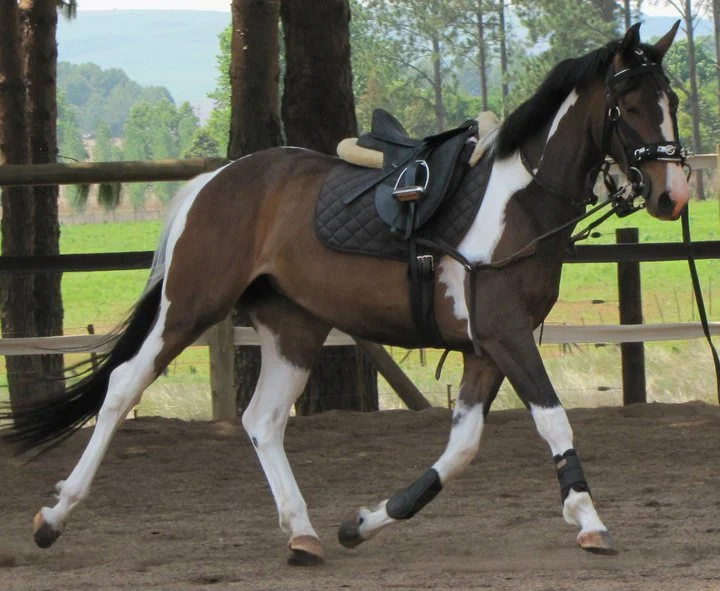
The Benefits of Lunging
Lunging offers a remarkable array of physical and mental benefits for horses at every stage of their training journey. Understanding these advantages helps us approach lunging sessions with clear purpose and direction, ultimately maximizing the effectiveness of this valuable training tool.
Physical Development and Conditioning
The controlled movement patterns during lunging create an ideal environment for building your horse’s physical strength and athleticism. As your horse moves on the circle, they naturally engage their core muscles, particularly when working in correct posture. This engagement strengthens the essential muscle groups that support collection, balance, and self-carriage – crucial elements for any riding discipline.
Working on the lunge also helps develop your horse’s proprioception – their awareness of where their feet are and how their body moves through space. The circular movement pattern encourages proper weight distribution and helps your horse develop the muscle memory needed for balanced movement under saddle. Regular lunging sessions can improve flexibility, particularly in the neck and back, while building cardiovascular fitness without the added weight of a rider.
Mental Stimulation and Training Benefits
Beyond the physical advantages, lunging provides invaluable opportunities for mental development. During these sessions, horses learn to focus on their handler’s voice and body language, developing crucial communication skills that transfer to all aspects of handling and riding. The controlled environment of lunging allows horses to process commands and expectations without the additional pressure of carrying a rider.
For young or green horses, lunging serves as an excellent introduction to basic training concepts. They learn to respond to voice commands, maintain steady gaits, and develop rhythm – all essential building blocks for future training. More experienced horses benefit from the mental stimulation of varied exercises and the opportunity to work independently, enhancing their confidence and self-carriage.
Assessment and Diagnostic Tool
One often overlooked benefit of lunging is its value as an assessment tool. Watching your horse move freely on the lunge provides crucial insights into their movement patterns, helping identify potential lameness issues, muscle imbalances, or areas needing development. This perspective is particularly valuable before riding, allowing you to assess your horse’s mood, energy level, and physical condition.
For veterinarians and equine professionals, lunging serves as an essential diagnostic tool. The circular movement often highlights subtle irregularities in gait or movement that might not be apparent when the horse is moving in a straight line or under saddle.
Rehabilitation and Conditioning
In rehabilitation scenarios, lunging provides a controlled way to rebuild strength and confidence. Whether recovering from an injury or returning to work after a break, the controlled nature of lunging allows for precise management of exercise intensity and duration. The handler can closely monitor the horse’s movement and responses, adjusting the workout as needed to support optimal recovery.
Energy Management and Behavior Modification
For horses with excess energy or those requiring additional exercise, lunging offers a structured outlet for physical activity. This can be particularly valuable during periods of limited riding time or challenging weather conditions. However, it’s crucial to note that lunging should never be used solely as a way to “tire out” a horse – the focus should always remain on productive training and development.
Building the Horse-Handler Partnership
Perhaps one of the most significant benefits of lunging is its impact on the relationship between horse and handler. These sessions create opportunities for clear communication, trust-building, and mutual understanding. Through consistent, well-structured lunging work, horses learn to respect their handler’s space while remaining attentive and responsive to commands, creating a foundation of trust that extends to all ground work and riding activities.
Understanding these diverse benefits helps us approach lunging with purpose and intention, rather than viewing it simply as a way to exercise our horses. In the next section, we’ll explore the essential equipment needed to ensure safe and effective lunging sessions, setting you up for success in implementing these valuable training techniques.
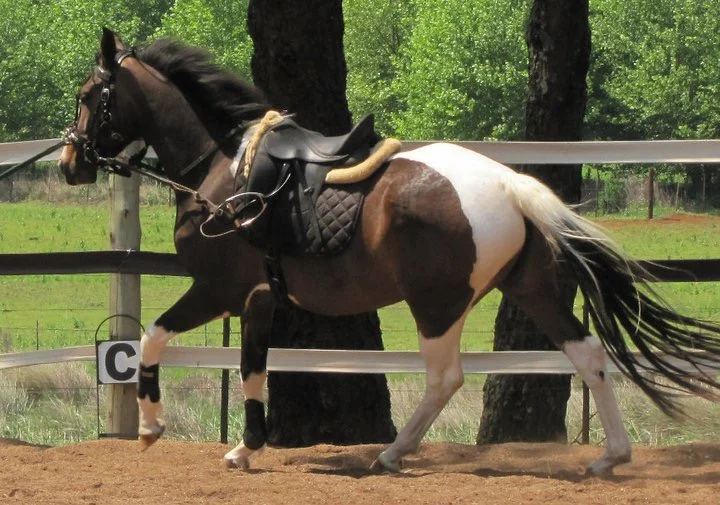
Essential Equipment for Safe Lunging
The foundation of successful lunging begins with having the right equipment, properly fitted and in good condition. Each piece of equipment plays a vital role in ensuring both safety and effectiveness during your training sessions. Let’s explore the essential items you’ll need and understand how to select and use them correctly.
The Lunging Cavesson or Headcollar
The most critical piece of equipment for lunging is what goes on your horse’s head. While some handlers use a regular headcollar, a properly fitted lunging cavesson offers superior control and comfort for your horse. A good lunging cavesson features three rings positioned on the noseband – one on each side and one in the center. This design allows for optimal control and clear communication without putting undue pressure on your horse’s mouth or poll.
When selecting a cavesson, look for sturdy construction with well-secured rings and comfortable padding around the noseband. The fit should be snug enough to prevent sliding but not so tight that it restricts your horse’s breathing or movement. The noseband should sit approximately two fingers’ width below the cheekbone, allowing your horse to breathe comfortably while maintaining effective control.
The Lunge Line
Your lunge line serves as your primary communication tool with your horse, making its selection particularly important. A good lunge line should be 25-30 feet long and made from lightweight yet durable material that’s comfortable in your hands. Cotton or lightweight webbing materials are excellent choices as they provide good feel while being strong enough to control even a strong horse.
The line should feature a secure clip for attachment to the cavesson and shouldn’t be too heavy, as excess weight can create unnecessary pressure on your horse’s head. Many experienced handlers prefer lines with distance markers woven into the material, helping maintain consistent circle sizes during training.
Protective Boots and Bandages
Protecting your horse’s legs during lunging is essential, as the circular movement can put additional stress on joints and tendons. All four legs should be properly protected with either boots or bandages. Exercise boots or specialized lunging boots provide excellent protection while allowing full range of motion. If using bandages, they must be applied correctly to prevent slipping or causing pressure points.
For horses prone to overreaching or those still developing balance, overreach boots on the front feet can prevent painful injuries. Remember that any protective equipment should be clean, in good condition, and properly fitted to provide effective protection without restricting movement.
Side Reins and Training Aids
While not necessary for basic lunging, side reins can be valuable training aids when used correctly. These adjustable reins attach to the saddle or lunging surcingle and help encourage correct head carriage and self-carriage. However, they should only be introduced once your horse is comfortable with basic lunging and should never be used as a shortcut to force a frame.
A properly fitted lunging surcingle provides secure attachment points for side reins and helps maintain their correct position. When selecting a surcingle, look for one with multiple attachment points to allow for gradual adjustments as your horse develops.
Handler’s Safety Equipment
Your safety as a handler is equally important. Essential items include:
- Sturdy gloves to prevent rope burns and maintain good grip
- Appropriate footwear with good grip and ankle support
- A safety helmet (particularly recommended when working with young or unpredictable horses)
- Clothing that allows free movement while being secure enough not to flap or catch on equipment
Arena and Space Requirements
While not equipment per se, your lunging space significantly impacts safety and effectiveness. An enclosed arena with good footing is ideal, providing secure boundaries and consistent surface quality. The area should be large enough to maintain a 20-meter circle without feeling confined, with good visibility and even ground.
Maintaining Your Equipment
Regular inspection and maintenance of your lunging equipment is crucial for safety. Check all stitching, buckles, and attachment points before each session. Clean equipment regularly and store it properly to prevent degradation. Replace any items showing signs of significant wear or damage immediately.
When all these equipment elements work together correctly, they create a safe and effective environment for productive lunging sessions. In our next section, we’ll explore how to properly prepare both your horse and your workspace for a successful lunging session, building on this foundation of proper equipment selection and use.
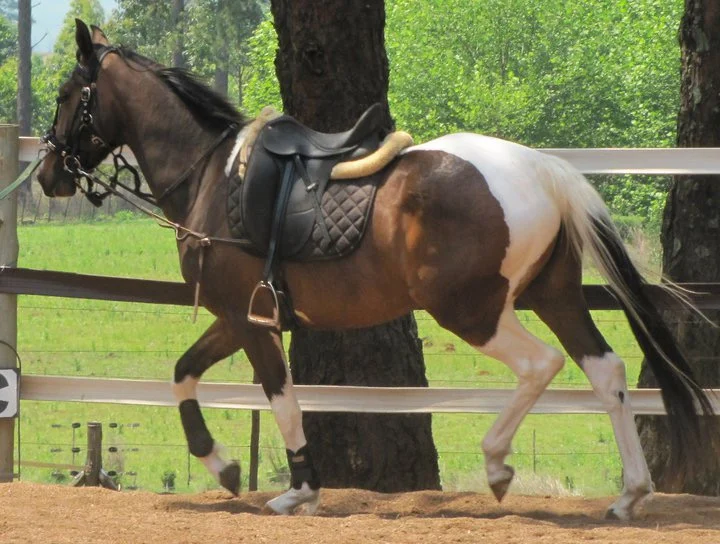
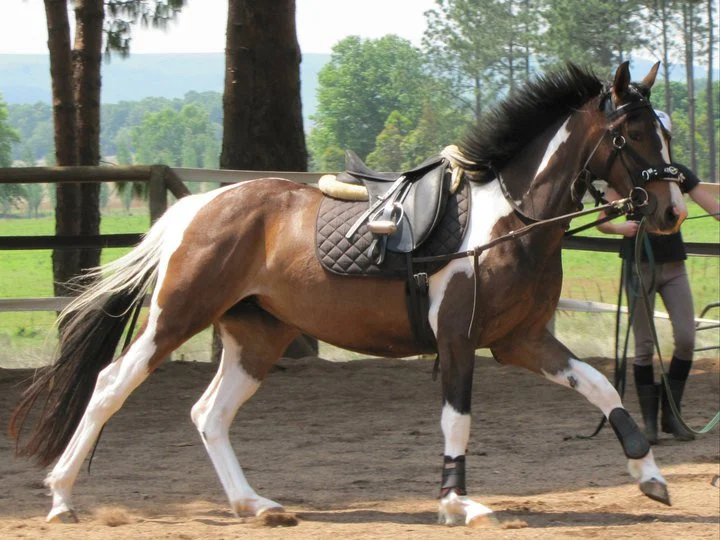
Preparing for Your Lunging Session
A successful lunging session begins long before you pick up the lunge line. Proper preparation creates a safe, productive environment and sets both you and your horse up for success. Let’s explore the essential steps to take before beginning your lunging work.
Safety Checks of Equipment
Start your preparation with a thorough inspection of all equipment you’ll be using. Run your hands along the full length of your lunge line, checking for any fraying, weak spots, or damage. Pay particular attention to stress points like clips and attachment areas. Examine your cavesson or headcollar carefully, ensuring all stitching is intact and buckles are functioning properly. If using protective boots or bandages, check that the velcro is clean and still grips effectively, and look for any signs of wear that might compromise their protective qualities.
Setting Up Your Lunging Area
The environment where you lunge plays a crucial role in your session’s success. Begin by walking the area where you’ll be working, checking for any hazards like holes, rocks, or uneven ground that could cause your horse to stumble. The footing should be level and provide good traction without being too deep or slippery. If you’re working in an arena, clear any jumps or obstacles that might restrict your movement or distract your horse.
Consider the weather conditions and how they might affect your workspace. Strong winds can make horses more excitable, while recent rain might have created slick spots. Position yourself so that neither you nor your horse will be looking directly into the sun during your session.
Proper Horse Preparation
Before fitting any equipment, spend a few moments observing your horse. Notice their mood and energy level – this information will help you adjust your session plans accordingly. Groom your horse thoroughly, paying special attention to areas where equipment will sit. This isn’t just about appearance; proper grooming helps you spot any injuries or sensitive areas that might affect your work.
When applying boots or bandages, ensure they’re snug but not restricting. If using a cavesson, take time to adjust it properly – a well-fitted cavesson should be snug enough to prevent sliding but allow comfortable jaw movement. If you’re using side reins, attach them loosely at first; they can be adjusted as needed once your horse is warmed up.
Handler Positioning and Posture
Your position and posture as a handler are fundamental to effective lunging. Practice your stance without your horse first: feet shoulder-width apart, knees slightly bent for balance. The lunge line should flow smoothly through your hands, with any excess line neatly folded rather than dragging on the ground. Position yourself where you can maintain a clear view of your horse’s entire body, typically slightly behind their shoulder when starting.
Many handlers find it helpful to practice their body position and line handling without a horse present. This allows you to develop muscle memory for smooth, controlled movements before adding the complexity of managing your horse.
Basic Commands Review
Before beginning, mentally review the voice commands you’ll be using. Consistency in your commands is crucial for clear communication with your horse. Your voice should be clear and confident, using different tones for different requests. Practice these commands out loud – yes, you might feel slightly self-conscious, but this rehearsal helps ensure your commands will be clear and confident when working with your horse.
Mental Preparation
Take a moment to mentally outline your session goals. What specific skills or movements do you want to work on? How will you progress through your planned exercises? Having a clear plan helps you maintain focus and make the most of your training time. However, remain flexible – good trainers know when to adjust their plans based on their horse’s responses.
Creating a Positive Environment
Finally, ensure the surrounding environment is conducive to productive training. If possible, schedule your session during quieter times when there will be fewer distractions. Let others in the area know you’ll be lunging, so they can give you appropriate space. A calm, focused environment helps both you and your horse concentrate on the work at hand.
With these preparations complete, you’re ready to begin the actual lunging work. In our next section, we’ll cover the step-by-step process of lunging technique, building on this foundation of thorough preparation.
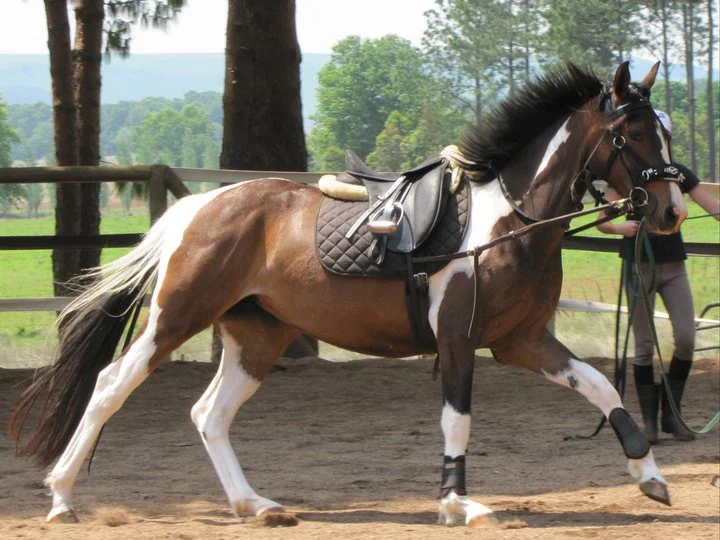
Step-by-Step Lunging Technique
The art of lunging requires a harmonious blend of clear communication, precise body language, and careful attention to your horse’s responses. Let’s break down the fundamental techniques that create the foundation for successful lunging sessions.
Starting Position and Handler Stance
Begin by positioning yourself slightly behind your horse’s shoulder, maintaining a triangle formation between you, your horse’s shoulder, and their hindquarters. Your body should be upright but relaxed, with your weight evenly distributed on both feet. Think of yourself as the center point of a compass, with your horse moving around you in a perfect circle. Your eyes should maintain a soft focus on your horse’s entire body, not just their head, allowing you to read and respond to their full range of movement and expression.
Hold the lunge line with both hands: your outside hand (the one closest to your horse) holds the line about two feet from the clip, while your inside hand manages the excess line in neat, organized folds. Never wrap the line around your hands – instead, let it flow through your fingers with gentle control. Your whip should be held in your inside hand, pointing toward your horse’s hindquarters at roughly a 45-degree angle.
Establishing the Circle
Starting your horse on the circle requires clear, deliberate communication. Begin by standing at the correct distance from your horse – approximately the length of your whip plus your arm. Ask your horse to walk forward using a consistent voice command (such as “walk on”) while simultaneously raising your outside hand to guide them forward and letting the line flow smoothly through your hands.
As your horse begins moving, focus on establishing a consistent circle size. A 20-meter circle is standard for most training purposes, though this can be adjusted based on your horse’s experience level and the available space. Your position should rotate smoothly as your horse moves, maintaining the same relationship to their body throughout the circle.
Controlling Speed and Direction
Your body position plays a crucial role in controlling your horse’s speed and direction. To maintain the current pace, keep your shoulders parallel to your horse’s body. To ask for more forward movement, turn your shoulders slightly toward their hindquarters while raising the whip slightly. To slow down, turn your shoulders toward their head while lowering your energy and using a calming voice command.
Remember that your energy directly influences your horse’s energy. Maintain calm, controlled movements, and use your voice commands consistently. Sharp or sudden movements can disturb your horse’s balance and concentration.
Voice Command Implementation
Clear, consistent voice commands form the backbone of effective lunging. Your commands should be distinct and delivered in a confident tone:
- “Walk on” for forward movement at walk
- “Trot” for upward transition to trot
- “Canter” for upward transition to canter
- “Steady” or “Easy” for maintaining the current pace
- “Whoa” for halt
The timing of your voice commands is crucial. Always give the voice command slightly before the corresponding body language cue, allowing your horse to make the mental connection between the command and the desired action.
Reading Your Horse’s Body Language
Successful lunging requires constant awareness of your horse’s responses. Watch their ears – are they focused on you? Their expression – are they relaxed and attentive or tense and distracted? Their body posture – are they moving freely and balanced or stiff and resistant? These observations help you adjust your technique and energy to support your horse’s learning and development.
Pay particular attention to signs of tension or resistance, such as:
- Head tossing or elevation
- Tail swishing
- Hollow back
- Quick, irregular steps
- Loss of bend on the circle
When you notice these signs, adjust your approach accordingly, perhaps by softening your aids or reducing the circle size temporarily to help your horse regain their balance and confidence.
Transitioning Between Gaits
Smooth transitions between gaits require clear preparation and timing. Before asking for any transition, ensure your horse is moving in balance on the circle. For upward transitions, increase your energy and use progressive aids – first the voice command, then a slight raising of the whip if needed. For downward transitions, decrease your energy while maintaining the same position, using your voice to support the transition.
Give your horse time to respond to each request, and reward good responses with a softening of the aids and verbal praise. This positive reinforcement helps build their confidence and understanding of what you’re asking.
Understanding how these elements work together creates the foundation for effective lunging. In our next section, we’ll explore more advanced techniques that build upon these fundamental skills. Would you like me to continue with that section?
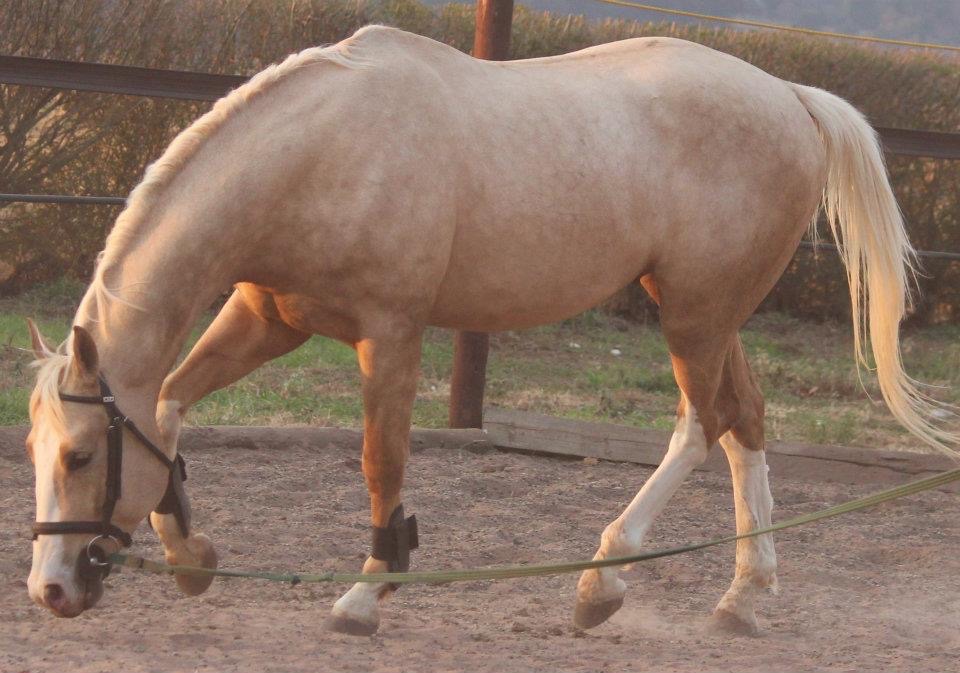

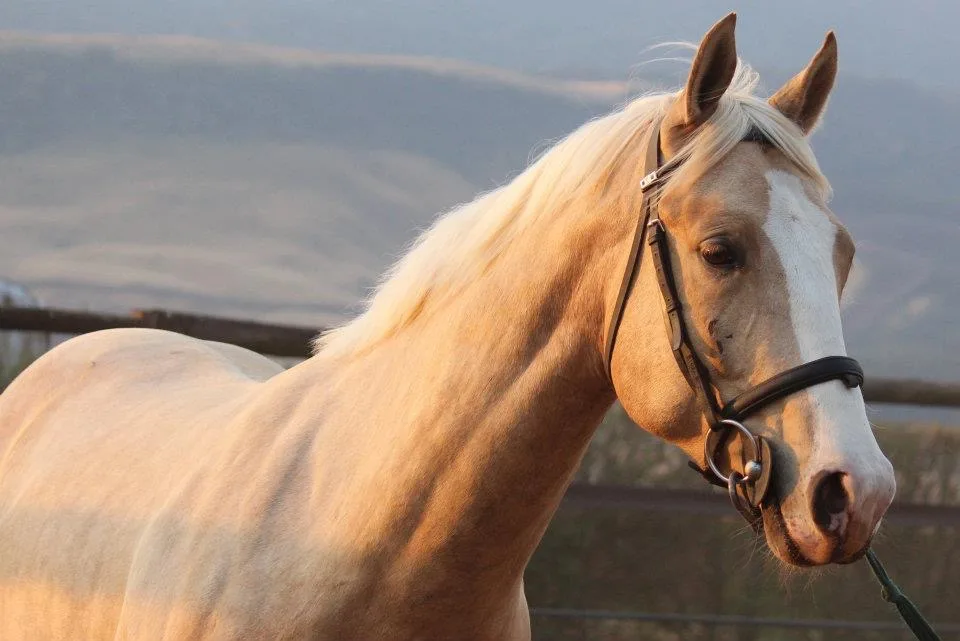
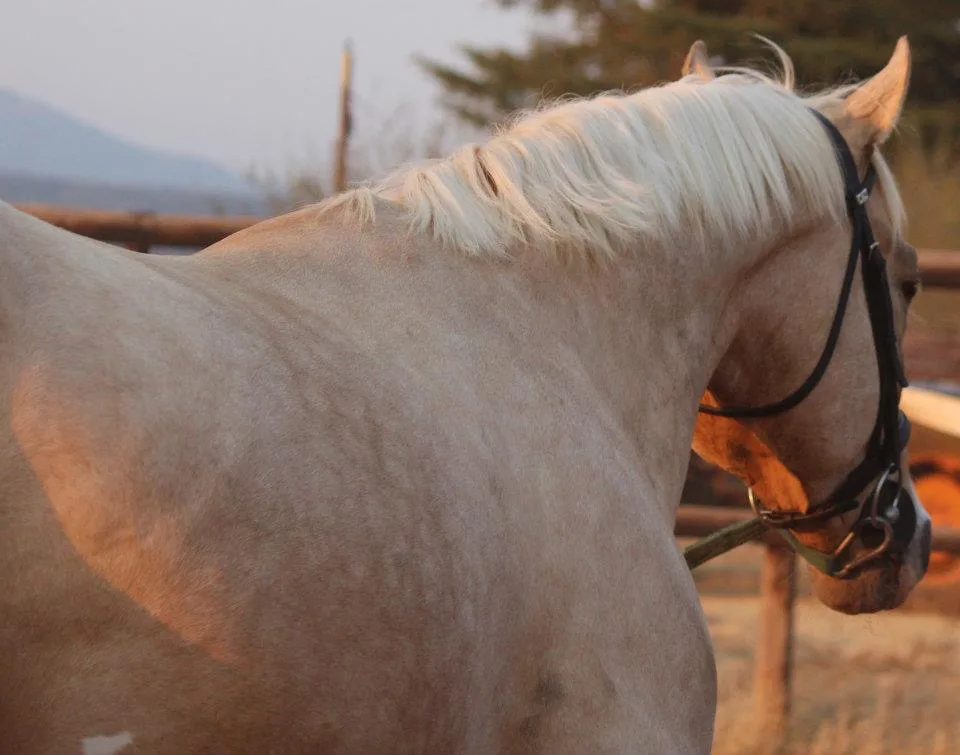
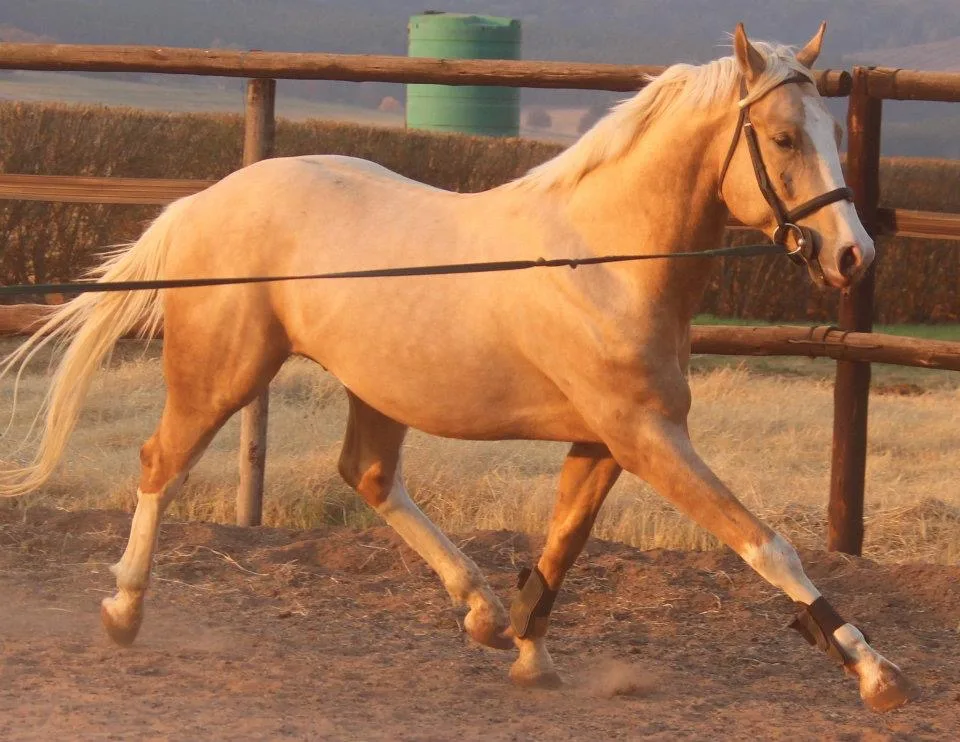
Advanced Lunging Techniques
Once you and your horse have mastered the fundamentals of lunging, you can begin incorporating more sophisticated exercises to enhance your training sessions. These advanced techniques help develop your horse’s balance, strength, and responsiveness while maintaining their engagement and interest in the work.
Using Side Reins Effectively
Side reins serve as a valuable tool for helping your horse develop correct muscling and self-carriage, but their introduction requires careful consideration and proper technique. Begin by attaching the side reins very loosely – they should only make contact when your horse significantly raises or extends their head. This initial setup allows your horse to understand the concept without feeling restricted.
As your horse becomes comfortable with the light contact, you can gradually adjust the side reins, always ensuring they remain elastic enough to allow natural head movement. A common mistake is making them too short too quickly, which can cause resistance and tension. Instead, think of side reins as offering your horse a suggestion rather than forcing a position. The ideal length allows your horse to carry their head slightly in front of the vertical while maintaining a relaxed topline.
Adding Ground Poles and Exercises
Ground poles introduce variety and challenge to your lunging sessions while developing your horse’s proprioception and coordination. Begin with a single pole on your circle, positioned so your horse can approach it perpendicular to their track. As they become confident, you can add more poles or create simple patterns. The key is to place them at appropriate distances that allow your horse to maintain their rhythm and balance.
For trot work, poles should be approximately 4.5 feet apart, while canter poles need roughly 9-12 feet of spacing. Remember that horses on a circle need slightly different distances than those working on a straight line – the inside of the circle requires less space than the outside. Regular work over poles helps develop your horse’s core strength, improves their awareness of foot placement, and encourages natural engagement of their hindquarters.
Teaching Transitions and Collection
Advanced transition work focuses on developing your horse’s ability to shift between gaits while maintaining balance and engagement. Start with simple transitions between gaits, then progress to transitions within gaits – working between collected, working, and extended paces. Your body language becomes increasingly subtle at this level, with minimal movement creating maximum effect.
When teaching collection, think of creating energy from behind while containing it with clear half-halts through the lunge line. Your position and energy should encourage your horse to step under themselves with their hind legs while maintaining an uphill balance. This work requires precise timing and feel – you’re essentially creating a conversation through the lunge line, asking your horse to compress their stride while maintaining impulsion.
Building Advanced Patterns
Once your horse is comfortable working on both reins in all gaits, you can introduce more complex patterns to challenge their balance and responsiveness. Spiral exercises, where you gradually decrease and increase the circle size, help develop their lateral flexibility and balance. Figure-eight patterns teach smooth direction changes while encouraging equal development on both sides.
When introducing new patterns, always begin at the walk to allow your horse to understand what you’re asking. Your body position becomes crucial here – you’ll need to adjust your position smoothly to guide your horse through these more complex shapes while maintaining consistent contact through the lunge line.
Developing Mental Focus
Advanced lunging work isn’t just about physical exercises – it’s also about developing your horse’s mental focus and responsiveness. Incorporate frequent changes of direction and transitions to keep your horse thinking and listening to your aids. Random variations in your patterns prevent anticipation and encourage your horse to stay tuned to your signals.
Remember that mental fatigue often sets in before physical tiredness. Watch for signs that your horse is losing concentration, such as losing accuracy in their circles or becoming less responsive to your aids. Short, focused sessions often prove more beneficial than longer, less precise work.
The progression through these advanced techniques should always be gradual and methodical. Each new element builds upon previously established skills, creating a solid foundation for continued development.
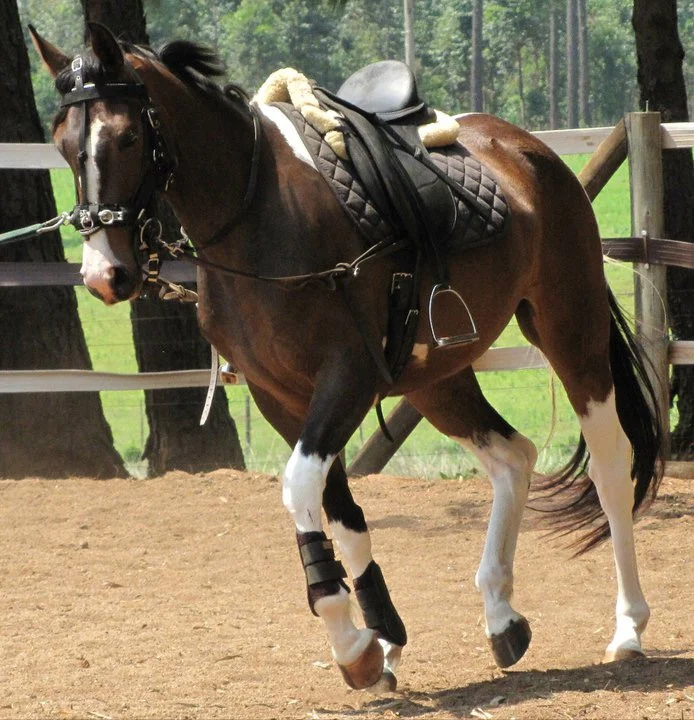
Common Challenges and Solutions
Even experienced handlers encounter challenges during lunging sessions. Understanding how to recognize and address these common issues helps maintain productive training while keeping both horse and handler safe.
Horse Running In or Out
One of the most frequent challenges is maintaining a consistent circle size when your horse either pulls toward you (running in) or drifts outward. When a horse runs in, they’re often seeking to reduce their workload or showing uncertainty. This typically manifests as a gradual spiral toward the center, with the horse’s inside shoulder dropping inward. To correct this, increase your energy and use your whip position (without making contact) to encourage the horse outward. Simultaneously, step slightly toward their shoulder while maintaining steady contact on the lunge line. The goal is to guide them back to the correct circle rather than forcing them abruptly.
Conversely, when a horse drifts outward, they’re usually either losing balance or avoiding work by making the circle larger. Address this by adjusting your position slightly inward while maintaining clear boundaries with your whip. Your energy should remain focused and contained, helping your horse find security in maintaining the correct circle size. Remember that both these issues often stem from underlying balance problems, so incorporating ground poles and frequent transitions can help develop the strength needed for maintaining a proper circle.
Loss of Forward Movement
When horses lose impulsion or become stuck, it usually indicates either physical or mental fatigue, or a lack of understanding. The key is identifying whether your horse is genuinely tired or simply losing motivation. Watch their overall energy level and quality of movement. If they maintain good posture but lack forward drive, try incorporating frequent gait changes to re-engage their interest. Sometimes, simply changing direction can refresh their mindset.
For horses that consistently lose impulsion at certain points on the circle, examine the footing and ensure there aren’t environmental factors causing hesitation. You might need to adjust your circle position or work on building confidence in specific areas. Remember that forward movement comes from clear, consistent expectations combined with immediate release of pressure when the horse responds correctly.
Resistance to Direction Changes
Direction changes can become particularly challenging when horses anticipate or resist the transition. This often manifests as bracing against the handler or rushing through the change. Start by ensuring your preparation is clear and consistent. Before each direction change, establish a clear halt or walk, depending on your horse’s level of training. Use your body position to telegraph the upcoming change, turning your shoulders in the new direction while maintaining steady contact through the lunge line.
If your horse consistently resists changes in one particular direction, they might have physical discomfort or asymmetrical development. Consider having a veterinary assessment to rule out any underlying issues. In the meantime, work on building flexibility and strength equally in both directions through gradual exercises and frequent walk transitions.
Breaking from Desired Gait
When horses struggle to maintain a consistent gait, it usually indicates either excess energy or a lack of balance. For horses that rush or break into faster gaits, focus on establishing clear half-halts through the lunge line. Your body position should remain calm and centered, avoiding any increase in your energy that might encourage rushing. Regular transitions between gaits help develop their self-control and understanding of your aids.
For horses that have difficulty maintaining canter, ensure your circle size provides enough support for balance. Sometimes a slightly smaller circle (while still maintaining safe size) can help them find their balance and rhythm. Ground poles can also help regulate stride length and rhythm, making it easier for them to maintain the desired gait.
Attention and Focus Issues
Environmental distractions can challenge even well-trained horses. Rather than fighting against their natural curiosity, use it constructively. If your horse becomes fixated on something outside the circle, acknowledge it by allowing them a brief moment to look, then quietly but firmly redirect their attention back to work. Your energy should remain consistent and focused, providing a steady point of reference for your horse.
For horses that consistently lose focus, try incorporating more frequent transitions and direction changes to keep their mind engaged with the work. Remember that mental focus often develops gradually – short, successful sessions build more confidence than lengthy, unfocused ones.
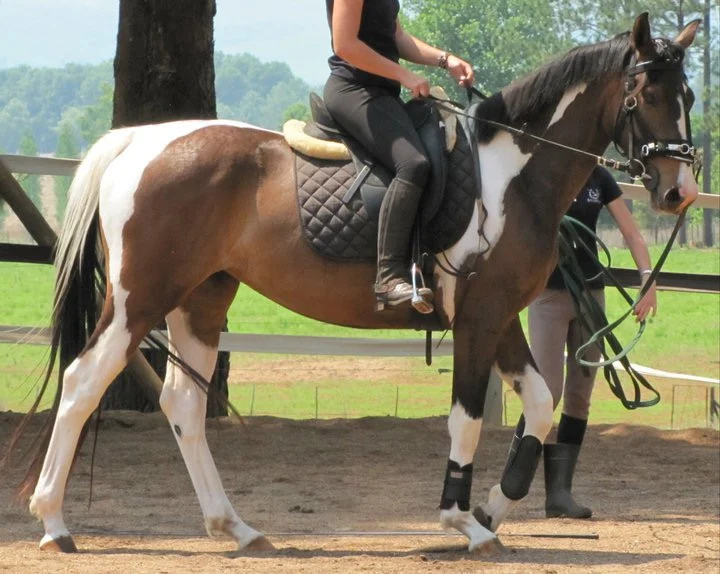
Progressive Training Plan
Developing a systematic approach to lunging training ensures steady progress while building your horse’s strength, confidence, and understanding. A well-structured training plan adapts to your horse’s current abilities while gradually introducing new challenges at an appropriate pace.
First Lunging Session Approach
The initial lunging session sets the foundation for all future work. Begin with a thorough groundwork assessment to understand your horse’s current responsiveness to basic commands and their general attention span. Keep this first session short – typically no more than 15-20 minutes of actual work – focusing primarily on establishing clear communication and building trust.
Start with large circles at a walk, allowing your horse to understand the basic concept of moving around you while responding to voice commands. Pay particular attention to their natural balance and any signs of tension or uncertainty. Success in this first session isn’t measured by perfect circles or transitions, but by your horse’s willingness to listen and try to understand what you’re asking.
Building Duration and Complexity
As your horse becomes comfortable with basic lunging, gradually increase both the duration and sophistication of your sessions. A typical progression might look like this:
Week 1-2: Focus on establishing consistent circles at walk and trot, with brief periods of canter if your horse is balanced enough. Sessions might last 20-25 minutes, including frequent breaks to process new learning. During this phase, pay special attention to your horse’s breathing and muscle development – they’re building new strength patterns that take time to establish.
Week 3-4: Introduce simple transitions between gaits, focusing on clear communication and balanced responses. Start incorporating short periods of work in side reins, initially keeping them quite loose. Sessions can extend to 25-30 minutes, but maintain regular walk breaks to prevent physical and mental fatigue.
Week 5-6: Begin adding ground poles on the circle, first at walk, then at trot as balance improves. Work on developing more precise transitions and experiment with varying circle sizes while maintaining balance. Your horse should now be developing enough strength and understanding to maintain focused work for up to 30-35 minutes.
Advancing the Training
Once the basics are solid, your progressive plan should include specific goals for each session while remaining flexible enough to adapt to your horse’s daily energy and focus levels. Consider structuring your weekly training like this:
Monday: Focus on basic strength and suppleness, incorporating lots of transitions between gaits while maintaining steady rhythm.
Wednesday: Introduce more technical work, such as ground poles or spiral exercises, challenging your horse’s balance and coordination.
Friday: Combine elements from previous sessions while introducing one new challenge, perhaps working on collecting and extending gaits within each pace.
Weekly Exercise Progression
Each week should build upon the previous work while introducing small challenges that develop your horse’s capabilities. For example:
Week 1: Single ground pole on circle
Week 2: Two ground poles on circle
Week 3: Three ground poles with varying distances
Week 4: Simple pole patterns incorporating transitions
Throughout this progression, continuously monitor your horse’s response to the work. Signs of positive development include:
- Improved muscle definition, particularly along the topline
- More balanced transitions between gaits
- Greater consistency in circle size and shape
- Better self-carriage and natural collection
- Increased attention span and focus during work
Goals and Milestones
Set clear, achievable milestones that help track progress:
Short-term goals (1-2 months):
- Maintaining consistent circle size at all gaits
- Clean transitions between gaits
- Comfortable work in correctly adjusted side reins
- Basic ground pole exercises with good rhythm
Medium-term goals (3-4 months):
- Development of collection and extension within gaits
- Smooth direction changes without breaking gait
- Complex ground pole patterns
- Improved self-carriage and balance
Long-term goals (6+ months):
- Advanced lunging exercises including lateral work
- Perfect circle geometry at all gaits
- Sophisticated transition work
- Development of true collection and engagement
As your horse develops balance, responsiveness, and confidence through regular lunging work, you may be ready to explore more advanced ground training techniques. Long-reining represents a natural progression from lunging, building upon the foundation of voice commands and ground control while introducing new dimensions of communication and lateral work. This advanced training method allows you to develop even more refined control and communication with your horse from the ground, helping prepare them for advanced ridden work. To learn more about taking this next step in your horse’s training journey, explore our comprehensive guide to long-reining.
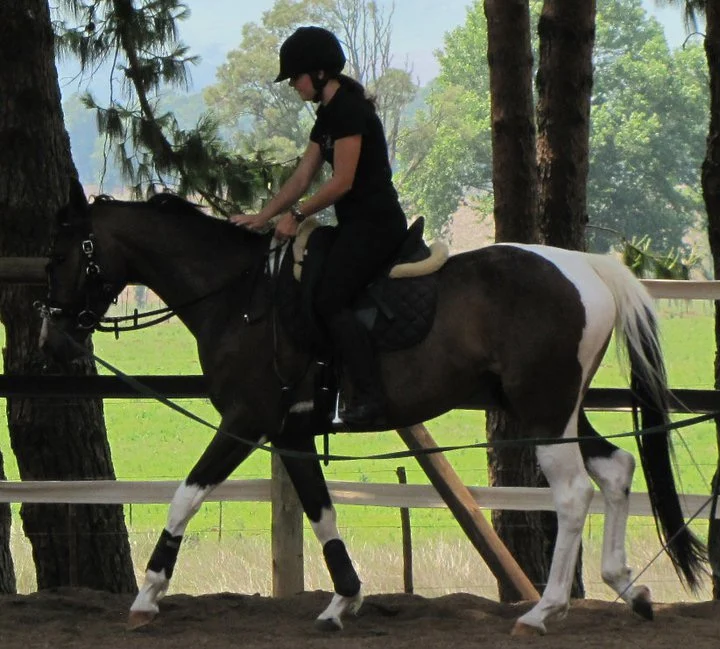
Safety Considerations and Tips
Safety in lunging requires constant awareness, proper preparation, and understanding of both common and unexpected risks. By maintaining high safety standards, you create an environment where both handler and horse can focus on productive training without unnecessary dangers.
Understanding Handler Position and Spatial Awareness
Your position relative to your horse creates critical safety zones that must be maintained throughout the session. The safest position is slightly behind your horse’s shoulder, maintaining a distance equal to your whip length plus your arm. This positioning allows you to clearly see your horse’s entire body while staying out of range of both their hindquarters and forehand. Think of your position as creating a triangle – you at the center point, with clear sight lines to both your horse’s head and hindquarters.
A common safety error occurs when handlers drift too close to their horse during the session. This typically happens gradually as fatigue sets in or concentration wanes. Develop the habit of regularly checking your position and distance, making small adjustments before you find yourself too close to your horse. Remember that your safety zone needs to adjust dynamically as your horse moves – maintaining appropriate distance isn’t a static exercise but a constant process of subtle repositioning.
Weather and Ground Conditions
Environmental conditions play a crucial role in lunging safety. Before each session, assess both the immediate and developing weather conditions. Strong winds can affect your horse’s behavior and make communication more challenging, while approaching storms might increase tension and reactivity. The ground surface requires particular attention – what was suitable footing yesterday might be dangerous today after rain or frost.
Develop the habit of walking your lunging circle before beginning work, checking for:
- Areas where water might have collected
- Frozen patches in cold weather
- Deep or uneven spots that could cause stumbling
- Changes in surface consistency that might surprise your horse
Remember that conditions can change during your session. Pay attention to how your horse’s hooves are affecting the surface and be prepared to adjust your circle position if certain areas become too deep or slippery.
Signs of Horse Fatigue
Recognizing and responding to fatigue signs helps prevent accidents caused by tired horses losing coordination or focus. Physical fatigue often shows through:
- Irregular breathing patterns
- Loss of rhythm in movement
- Dropping the inside shoulder
- Stumbling or dragging feet
- Excessive sweating relative to the work level
Mental fatigue can be equally dangerous and often manifests as:
- Loss of attention to handler cues
- Irregular circle size
- Breaking gait without cause
- Resistance to previously established commands
- Increased spookiness or tension
When you notice these signs, begin winding down your session. It’s better to end slightly early with a positive, controlled conclusion than to risk an accident by pushing a tired horse.
Emergency Situation Handling
Even with perfect preparation, emergency situations can arise. Develop clear mental protocols for common scenarios:
If your horse pulls away suddenly:
- Maintain your position rather than being pulled off balance
- Allow the line to slide through your hands (wearing gloves) rather than gripping tightly
- Use your voice to attempt to regain your horse’s attention
- Keep your feet moving to maintain balance and adjust position
If your horse spooks or bolts:
- Stay calm and centered
- Keep the line from tangling around you
- Use your voice steadily and calmly
- Gradually spiral your horse back to a controlled circle
Equipment Failure Response:
- Always check equipment before starting
- Have a plan for safely ending the session if something breaks
- Know how to safely remove equipment from a nervous horse
- Keep spare equipment easily accessible
Creating Safe Habits
Long-term safety in lunging comes from developing consistent habits:
- Always wear gloves and appropriate footwear
- Never wrap the lunge line around your hand
- Maintain awareness of your surroundings, including other arena users
- Keep your focus entirely on your horse during the session
- Regular equipment checks before and after use
- Consistent warm-up and cool-down procedures
- Clear communication with others in the area about your space needs

Special Considerations
Different horses require tailored approaches to lunging based on their age, experience level, physical condition, and individual temperament. Understanding how to adapt your techniques for various types of horses ensures safe and effective training sessions that support each horse’s unique developmental needs.
Lunging Young Horses
Working with young horses requires exceptional patience and clear, consistent communication. These horses are still developing both physically and mentally, making it crucial to introduce lunging gradually. Begin with very short sessions, often no more than 10-15 minutes of actual work, focusing primarily on establishing basic concepts and building confidence.
Young horses benefit from frequent breaks to process new information. Their muscles and joints are still developing, so avoid small circles that could stress their growing bodies. A circle diameter of 20 meters or larger provides adequate space for balanced movement while reducing physical strain. Pay particular attention to the footing, as young horses often lack the coordination to recover from unexpected ground changes.
The primary focus should be on developing straightness and rhythm before attempting any collection or advanced exercises. Allow natural head carriage rather than using side reins or other training aids in the early stages. Remember that every positive experience now builds foundation for future training, while negative experiences can create lasting resistance.
Working with Senior Horses
Older horses require careful consideration of their physical capabilities and limitations. Many senior horses have existing joint conditions or reduced flexibility that affects their work capacity. Begin each session with a longer warm-up period, allowing their muscles and joints to loosen gradually. Pay careful attention to temperature and footing conditions, as older horses may be more sensitive to environmental factors.
Monitor their breathing and energy levels closely, as senior horses often tire more quickly than their younger counterparts. However, don’t assume that age alone limits their capabilities – many older horses maintain excellent fitness levels when worked appropriately. The key is finding the balance between maintaining their fitness and respecting their physical limitations.
Consider breaking longer sessions into shorter periods with walking breaks, allowing recovery time while maintaining mental engagement. Some senior horses actually benefit from more frequent, shorter sessions rather than longer workouts.
Rehabilitation Lunging
Horses returning from injury require especially careful management during lunging sessions. Always work closely with your veterinarian and follow their specific guidelines for exercise progression. Start with very short sessions focused on quality of movement rather than quantity of work. Pay particular attention to symmetry in movement, noting any signs of compensation or uneven loading.
Circle size may need adjustment to accommodate specific conditions – some injuries benefit from larger circles to reduce stress, while others might require smaller circles to encourage specific muscle engagement. Ground poles and transitions should be introduced gradually, always monitoring the horse’s response for signs of discomfort or fatigue.
Documentation becomes particularly important during rehabilitation work. Keep detailed records of session duration, exercises performed, and your horse’s responses to help track progress and identify potential setbacks early.
Competition Horse Conditioning
High-performance horses often use lunging as part of their fitness and conditioning program. These sessions need to complement their under-saddle work while providing opportunities for mental refreshment. Focus on quality of movement and engagement rather than duration, using lunging to develop specific aspects of their training program.
Incorporate more sophisticated exercises such as frequent transitions, collected and extended work within gaits, and complex pole patterns to maintain mental engagement. However, remember that even advanced horses benefit from basic work focused on relaxation and correct movement patterns.
Be particularly mindful of footing conditions with competition horses, as their higher level of fitness can sometimes mask early signs of strain or fatigue. Regular assessment of their movement quality helps prevent overwork and maintains their competitive edge.
Handling Different Temperaments
Nervous or High-Energy Horses:
- Begin with larger circles to help them feel less confined
- Use a calm, steady voice to help establish rhythm
- Incorporate frequent direction changes to maintain focus
- Build duration gradually as their confidence increases
Lazy or Unmotivated Horses:
- Keep sessions interesting with varied exercises
- Use clear, energetic aids while maintaining patience
- Reward forward movement immediately
- Incorporate ground poles to encourage natural engagement
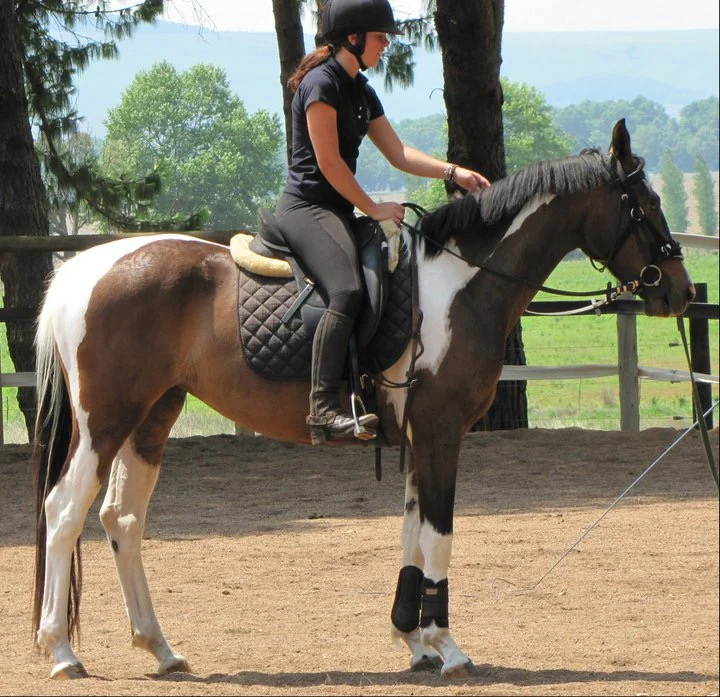
Troubleshooting Guide
Understanding how to diagnose and address specific behavioral issues during lunging helps maintain productive training sessions while building your horse’s confidence and understanding. Let’s explore common problems and their solutions, along with how to identify the root causes of challenging behaviors.
Solutions for Specific Behavioral Issues
Head Tossing and Resistance
When a horse consistently tosses their head during lunging, it often indicates tension or discomfort rather than simple disobedience. Begin by examining your equipment fit, particularly the cavesson or headcollar, ensuring it’s not causing any pressure points. If using side reins, they may be too tight or introduced too quickly. Consider removing training aids temporarily to help identify whether the behavior stems from physical discomfort or training confusion. Gradually reintroduce equipment once you’ve established relaxed, forward movement.
Counter-Bending on the Circle
When your horse looks to the outside of the circle rather than bending correctly through their body, they’re often struggling with balance or trying to avoid engaging their inside hind leg. Start by enlarging your circle slightly to give them more space to find their balance. Use subtle adjustments in your whip position to encourage their inside hind leg to step under while keeping your lunge line contact steady and supportive. Ground poles placed on the circle can help naturally encourage correct bend as your horse negotiates them.
Rushing and Irregular Paces
Horses that rush or show irregular paces usually lack confidence in their balance or are trying to avoid working properly through their body. Address this by establishing a clear rhythm at the walk before attempting faster gaits. Your body position becomes crucial – maintain a calm, steady presence while using clear half-halts through the lunge line to help regulate their pace. Voice commands should emphasize steady, rhythmic movement rather than forward energy.
Equipment Adjustments
Fine-Tuning Your Tools
Sometimes behavioral issues stem from equipment that needs adjustment rather than training gaps. Consider these common equipment-related solutions:
Cavesson Positioning
If your horse consistently raises their head or shows tension through their poll, check the height of your cavesson’s noseband. It should sit approximately two fingers’ width below the cheekbone, allowing comfortable jaw movement while maintaining clear communication. The side rings should align with the corners of the mouth without pulling up or down when pressure is applied.
Lunge Line Management
When your horse struggles to maintain consistent contact, examine how you’re handling the line. Ensure you’re not inadvertently creating uneven pressure through inconsistent hand positions. Practice allowing the line to flow smoothly through your hands while maintaining steady, supportive contact. Sometimes switching to a lighter or heavier line can significantly improve your horse’s comfort and response.
Side Rein Considerations
For horses working in side reins, ensure they’re attached at the appropriate height and length. They should encourage correct posture without forcing position – your horse should be able to stretch forward and down while maintaining light contact. If you notice increased tension or resistance, try adjusting one side slightly longer than the other to help your horse find better balance.
When to Seek Professional Help
Recognizing the need for expert guidance can prevent small issues from becoming ingrained problems. Consider seeking professional assistance when:
Persistent Balance Issues
If your horse consistently struggles with balance despite careful circle size management and basic exercises, a professional can help identify whether the problem stems from physical limitations or training gaps. They might recommend specific exercises or suggest having your horse evaluated by a veterinarian or equine bodyworker.
Escalating Resistance
When a horse shows increasing resistance despite consistent, patient training, a professional trainer can offer fresh perspective and additional techniques. They might spot subtle communication issues between handler and horse or identify physical issues that need addressing.
Safety Concerns
If you find yourself feeling unsafe or unsure during lunging sessions, don’t hesitate to seek professional help. A qualified trainer can help rebuild confidence for both horse and handler while ensuring safe training practices.
Creating Solutions Through Observation
Developing your troubleshooting skills requires careful observation and systematic problem-solving. Keep a training journal noting specific behaviors, when they occur, and what solutions you’ve tried. This documentation helps identify patterns and track progress as you work through challenges. Remember that most behavioral issues have underlying physical or psychological causes – taking time to understand the root cause often leads to more effective, lasting solutions.
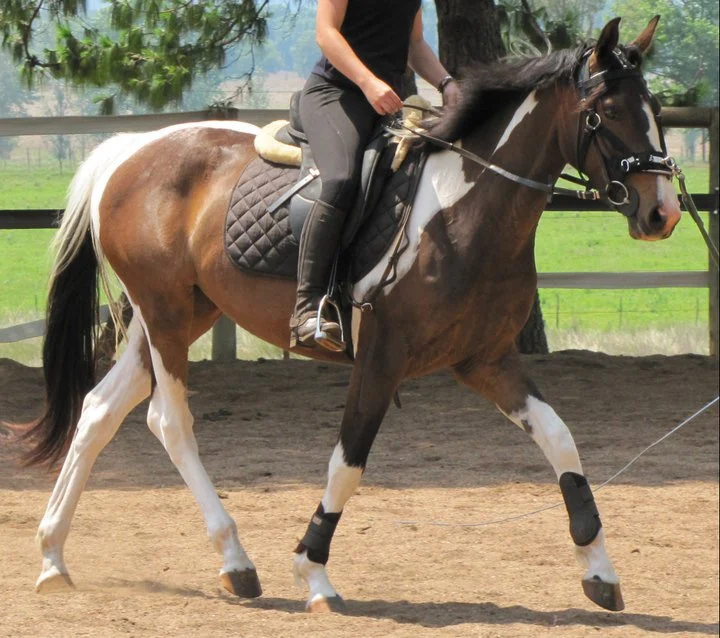
Conclusion
The journey of mastering lunging technique represents an ongoing commitment to developing both handler and horse. When approached systematically and with proper understanding, lunging becomes far more than a simple exercise tool – it transforms into a sophisticated training method that enhances every aspect of your horse’s development.
Through careful attention to foundational elements like proper equipment selection, precise body positioning, and clear communication, you create the framework for successful training sessions. Each element we’ve explored, from basic circle work to advanced training patterns, builds upon this foundation to create a comprehensive system for developing your horse’s physical and mental capabilities.
Success in lunging comes from understanding that every horse is an individual, requiring thoughtful adaptation of these techniques to suit their specific needs. Whether working with a young horse just beginning their training journey, rehabilitating a horse after injury, or fine-tuning an experienced competition partner, the principles remain consistent while the application flexes to meet each horse’s unique requirements.
Remember that progression in lunging work should always prioritize quality over quantity. Small, incremental improvements built through consistent, thoughtful training create lasting results. Pay attention to your horse’s responses, both physical and mental, using them as guidelines for adjusting your training approach. Celebrate the small victories – a moment of perfect balance, a seamlessly executed transition, or simply a focused, engaged session – as these mark real progress in your horse’s development.
Most importantly, approach each session as an opportunity for strengthening the partnership between you and your horse. The skills developed through lunging work – clear communication, mutual trust, and responsive cooperation – extend far beyond the lunging circle, enhancing every aspect of your horse’s training and handling.
As you continue developing your lunging skills, remember that even experienced handlers constantly refine their technique and understanding. Stay curious, remain observant, and always prioritize your horse’s wellbeing. Through patient, systematic training and careful attention to both technical details and your horse’s responses, you’ll develop the skills needed to make lunging a valuable part of your horse’s training program.
The time invested in mastering proper lunging technique pays dividends throughout your horse’s training journey, creating a foundation of balance, strength, and understanding that benefits every aspect of their development. Whether your goals include competition success, rehabilitation, or simply maintaining a happy, well-trained horse, the principles and techniques we’ve explored provide the tools needed for achieving those objectives through thoughtful, systematic training.
The next step is long-lining your horse, long-lining compliments lunging – have a look at our long-reining post here
Additional Resources for Mastering Lunging Techniques
Professional Organizations and Certifications
The British Horse Society (BHS) offers extensive training resources and certification programs that include detailed instruction on lungeing techniques. Their progressive training system provides structured learning opportunities for handlers at all levels, from complete beginners to advanced trainers.
The United States Dressage Federation (USDF) provides educational materials and workshops specifically focused on lungeing as part of their training methodology. Their instructor certification program includes detailed sections on proper lungeing techniques and theory.
The German National Equestrian Federation (FN) publishes comprehensive training materials based on classical principles, including detailed sections on lungeing methodology. Their systematic approach to horse training has influenced equestrian education worldwide.
Recommended Reading Materials
Books focused specifically on lungeing:
“The Art of Lungeing” by Sylvia Stanier offers detailed insights into classical training methods and progressive exercise development. This comprehensive guide covers everything from basic techniques to advanced work with long reins.
“101 Lungeing and Long-Reining Exercises: English and Western” by Cherry Hill provides practical exercises suitable for horses and handlers at various skill levels. The clear illustrations and step-by-step instructions make it particularly valuable for visual learners.
“Academic Art of Riding: A Training System Based on the Principles of Ludwig von Hünersdorf” by Bent Branderup includes excellent sections on lungeing as part of classical horse training. This book helps readers understand how lungeing fits into the broader context of systematic horse development.
Broader training resources that include valuable lungeing sections:
“German Training Scale” published by the German Equestrian Federation provides fundamental principles that apply directly to lungeing work.
“The Complete Training of Horse and Rider” by Alois Podhajsky includes classical training principles that inform effective lungeing practice.
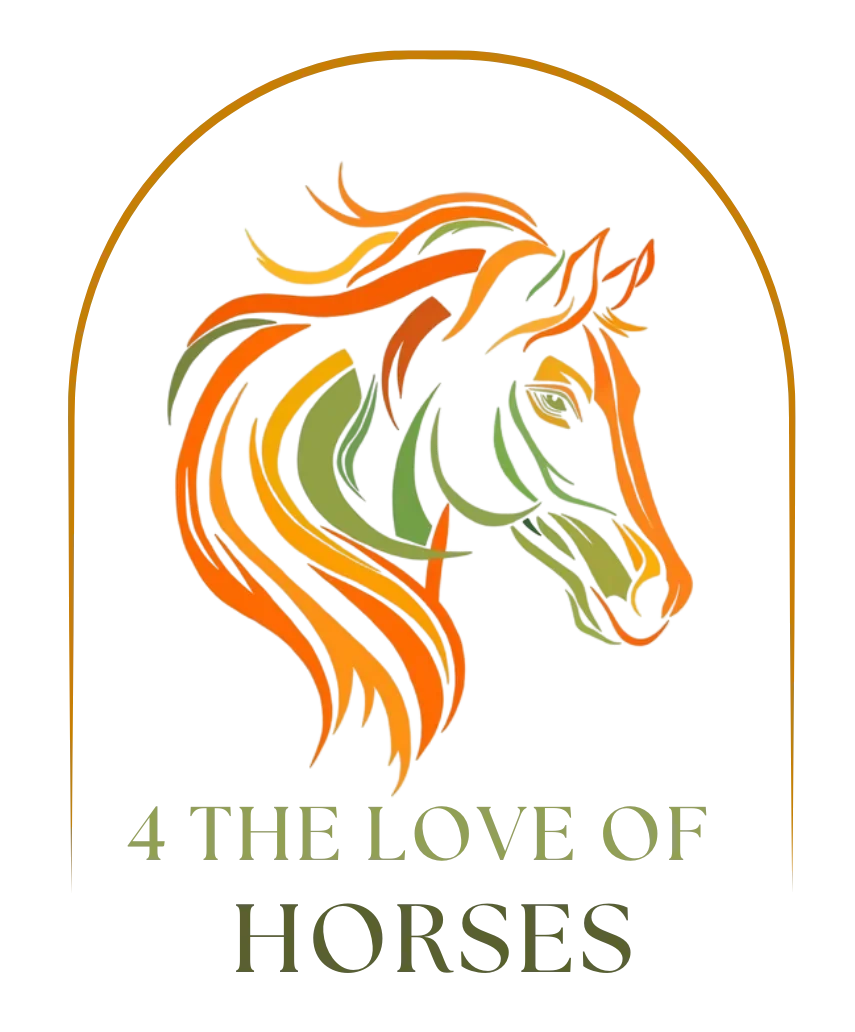
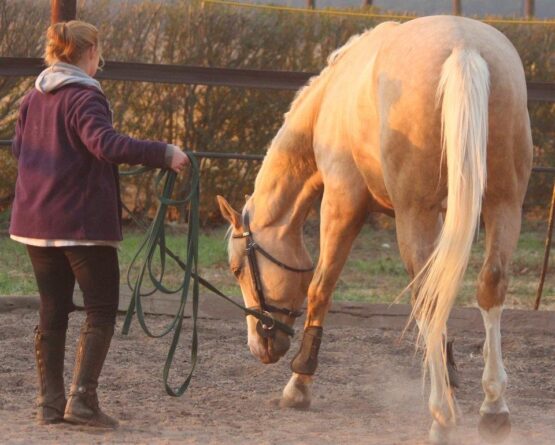
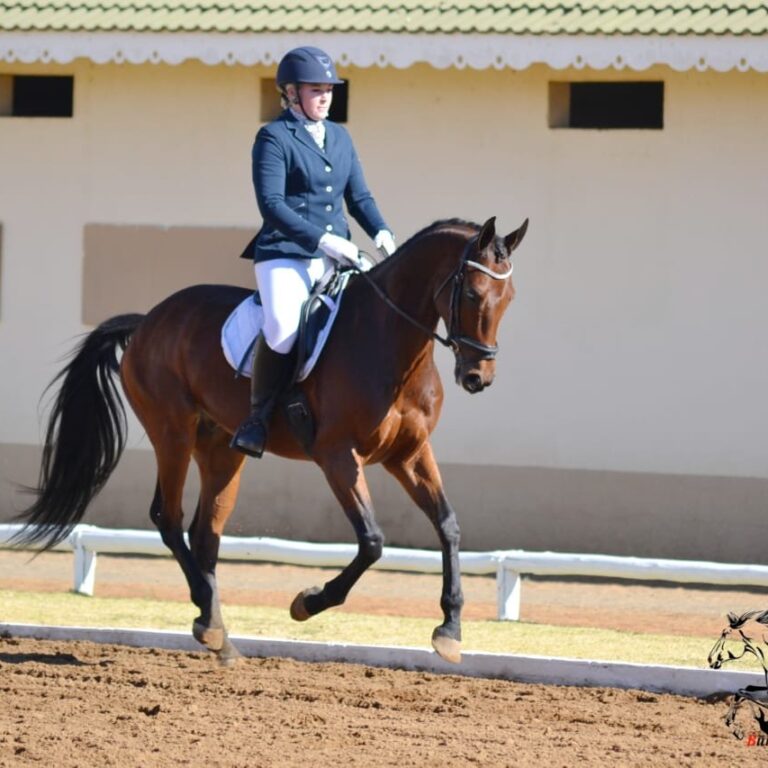
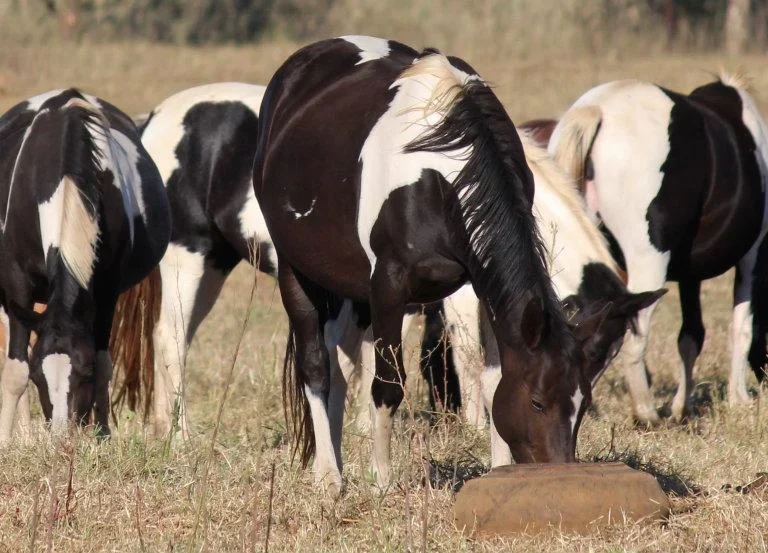

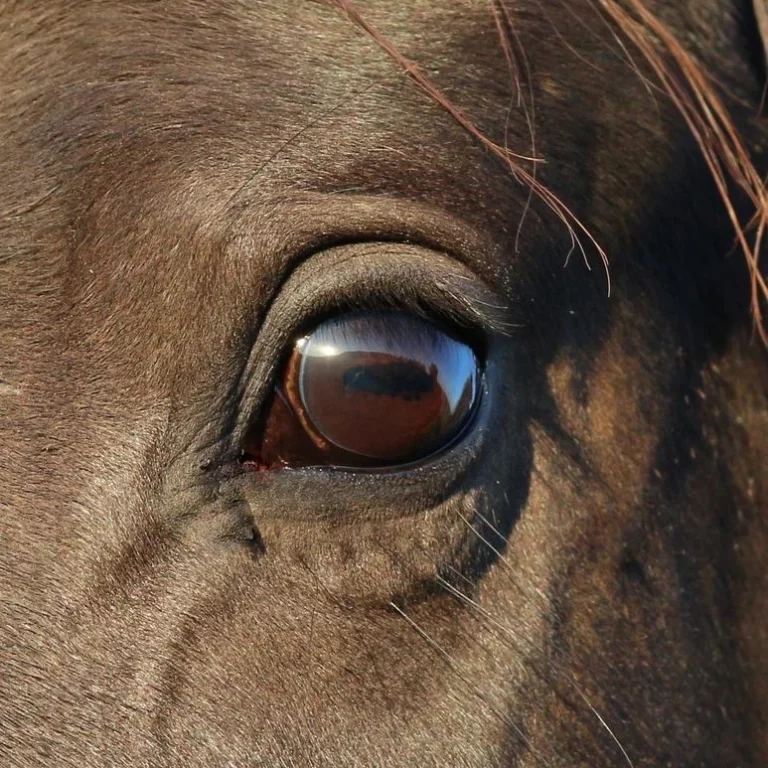
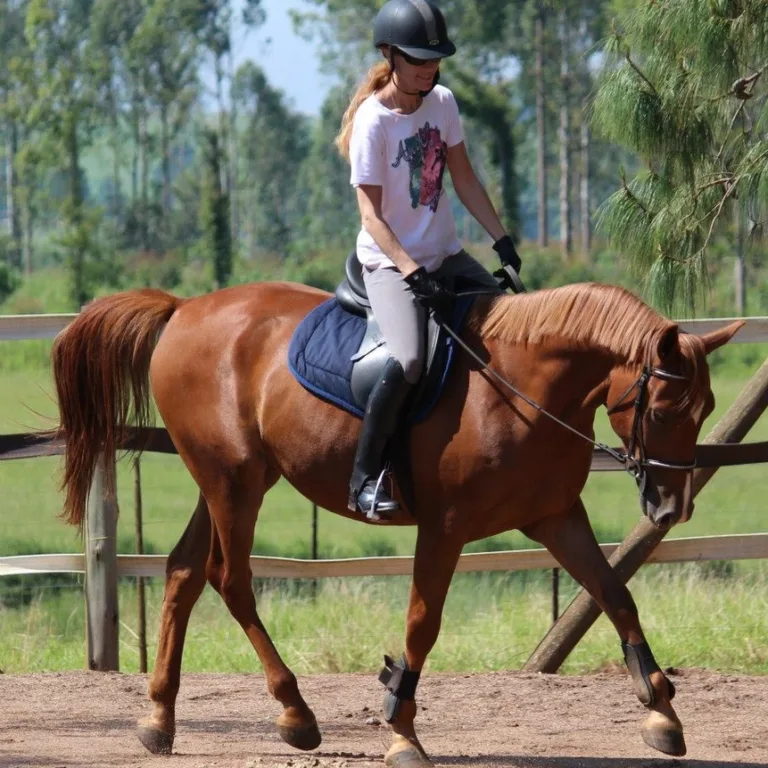
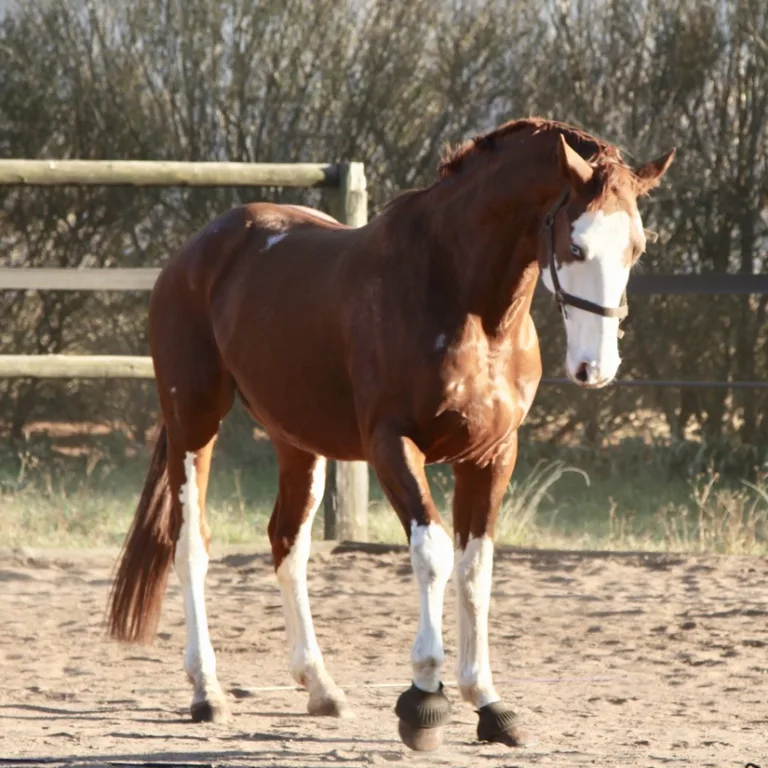
Leave a Reply